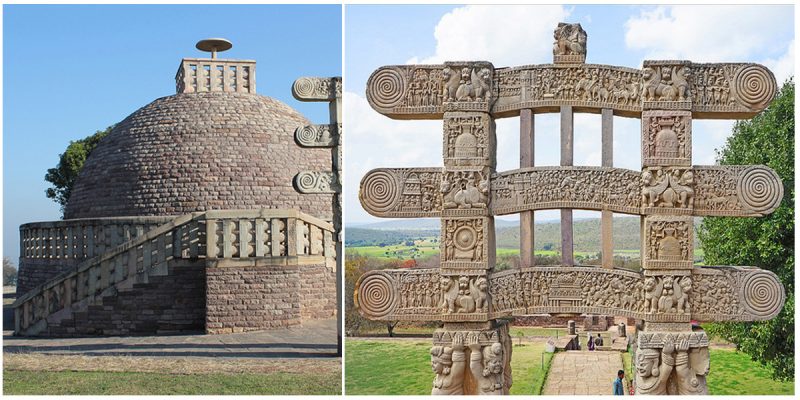Sanchi Town in Raisen District of the state of Madhya Pradesh, India, is synonymous with Buddhist Stupas, which are hemispherical brick structures containing relics of the Buddha. The most important of all the Sanchi monuments is the Sanchi Stupa. It is the oldest stone structure in India and was originally commissioned by the emperor Ashoka the Great in the 3rd century BCE.
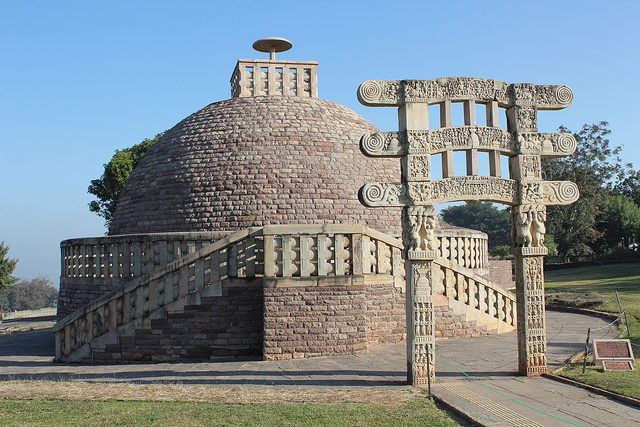
According to legend, King Ashoka created 84, 000 stupas and divided the Buddha’s ashes among them all. He was responsible for building many stupas all over India and the other territories under the Mauryan Dynasty. He built stupas in Pakistan, Bangladesh, Afghanistan and Nepal.
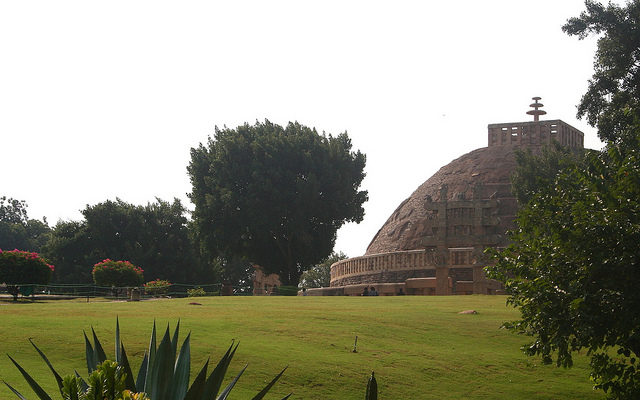
The original brick stupa was later covered with stone during the Shunga period. The Sanchi Stupa was enlarged and decorated with railings, staircases and a harmika on the top. The gates and the railings of the stupa are sculptured with different designs and motifs. The Buddha has been shown symbolically in the form of a tree or through other inanimate figures.
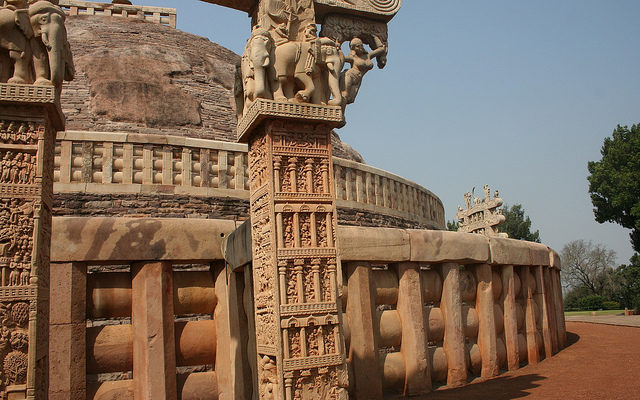
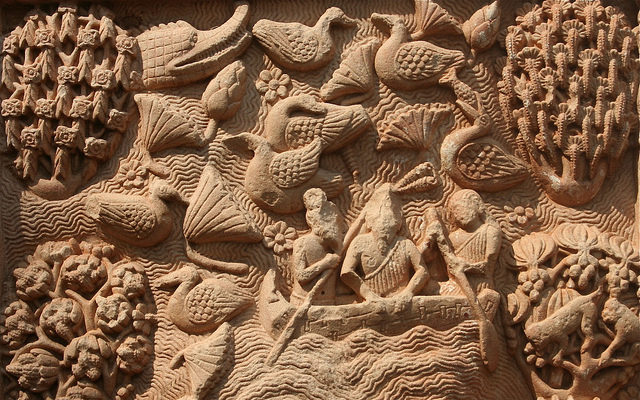
During the Satavahana period, the local population donated money for the establishment of the stupa to attain spiritual merit. Devotees who donated money towards a sculpture would often choose their favorite scene from the life of the Buddha and then have their names inscribed on it.
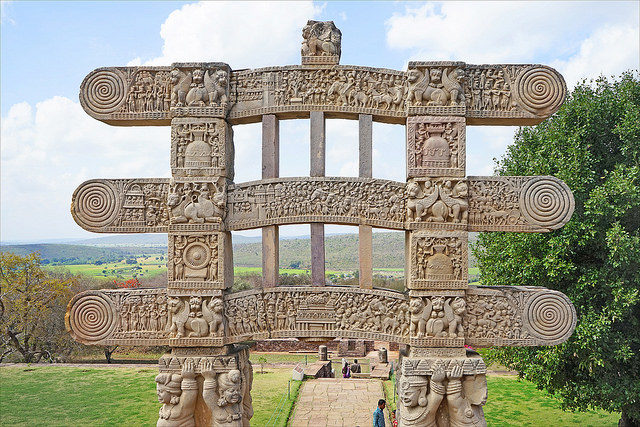
The Sanchi Stupa is a fine example of the development of the Buddhist architecture and sculpture beginning from the 3rd century B. C to the 12th century. With the decline of Buddhism in India, the monuments of Sanchi went out of use and fell into a state of disrepair.

The site of Sanchi was discovered by Westerners in the year 1818 by General Taylor, and between 1912 and 1919 the structures were restored to their present condition under the supervision of Sir John Marshall. Today, there are around fifty monuments on the hill of Sanchi, including three stupas and several temples. Since 1989, the monuments have been listed among the UNESCO World Heritage Sites.
